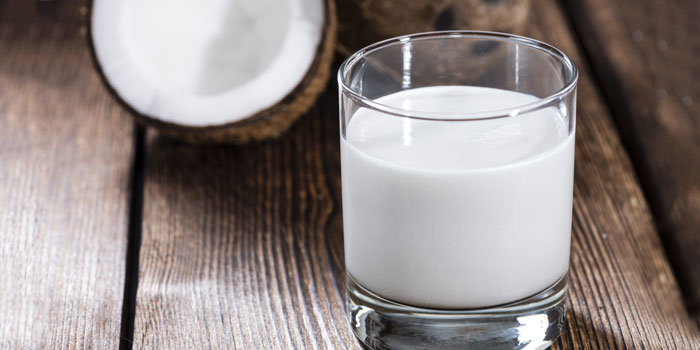
Pronounce it: ko-ko-nut mill-k
Coconut milk is not the slightly opaque liquid that flows from a freshly opened coconut – that is coconut water. Coconut milk is made by grating fresh coconut flesh and then working that with water, traditionally by hand. With little or no water added, rich coconut cream is obtained while more water and greater working results in a thinner milk. Even so, like unhomogenised dairy milk, if left to stand, a cream rises and is often used as a frying medium – the classic way to start Thai sauces for instance. Commercially marketed coconut milks often have emulsifiers added, so no separation occurs.
Both coconut cream and milk are very high in saturated fat and neither has a wide range of useful nutrients. Excessive use of coconut milk is associated with weight gain (286 calories per 100 grams) and with raised levels of blood cholesterol. That said, coconut milk is delicious and judicious use of it in a varied diet is perfectly fine.
Find out about the health benefits of coconut milk.
Availability
Anyone with a fresh coconut can make it. Desiccated coconut can also be used after soaking and rehydrating. Otherwise, coconut milk and cream products are widely available, sometimes frozen.
Choose the best
Always best used as fresh as possible and storage advice in commercial products should be adhered to strictly. Check for added ingredients in packaged products and choose accordingly.
Cook it
Coconut milk can be used in place of dairy milk or cream, depending on how thick it is. It can be used in tea or coffee or as a cream substitute to make or to dress all sorts of puddings and desserts, especially those including tropical fruits. In south Asia it is traditionally used to make pancakes. On Pitcairn Island in the Pacific, you can enjoy a dish called Humpus Bumpus comprising banana fritters cooked in coconut milk and the milk is also used to dress green beans and salads.
Be the first to comment on "Coconut milk"